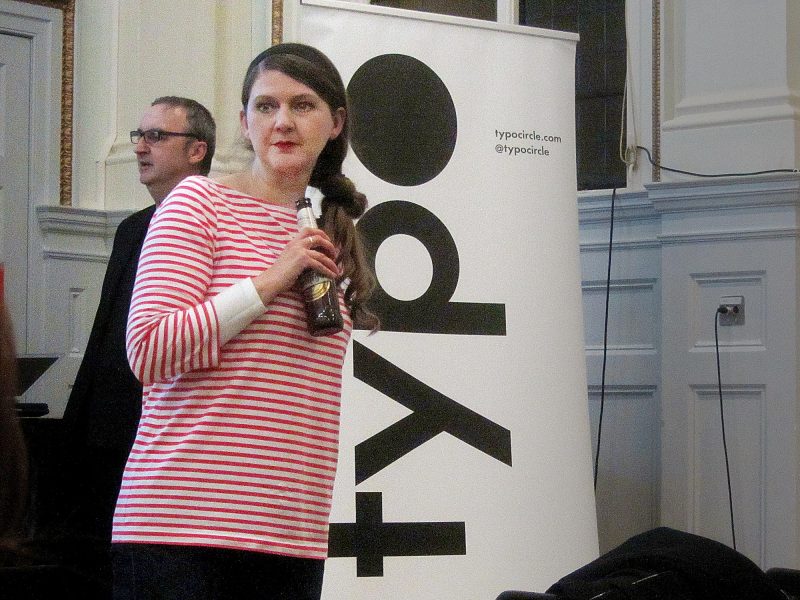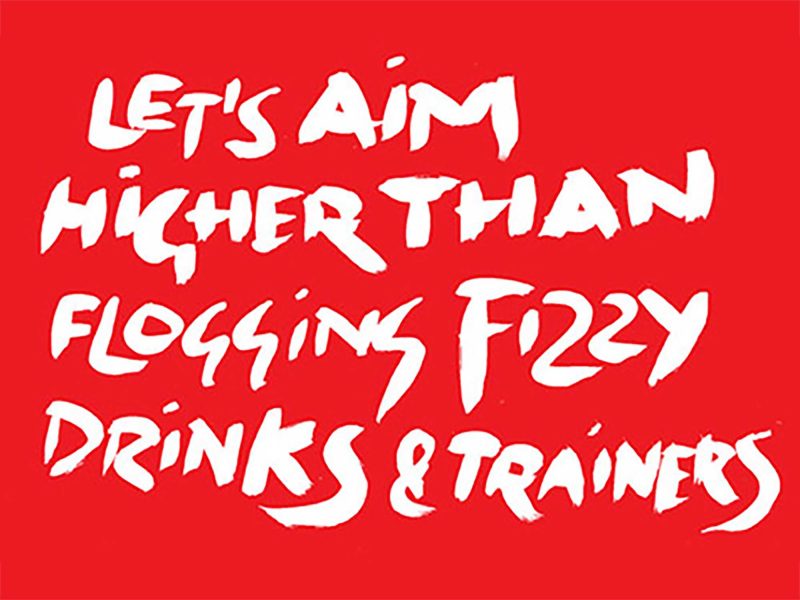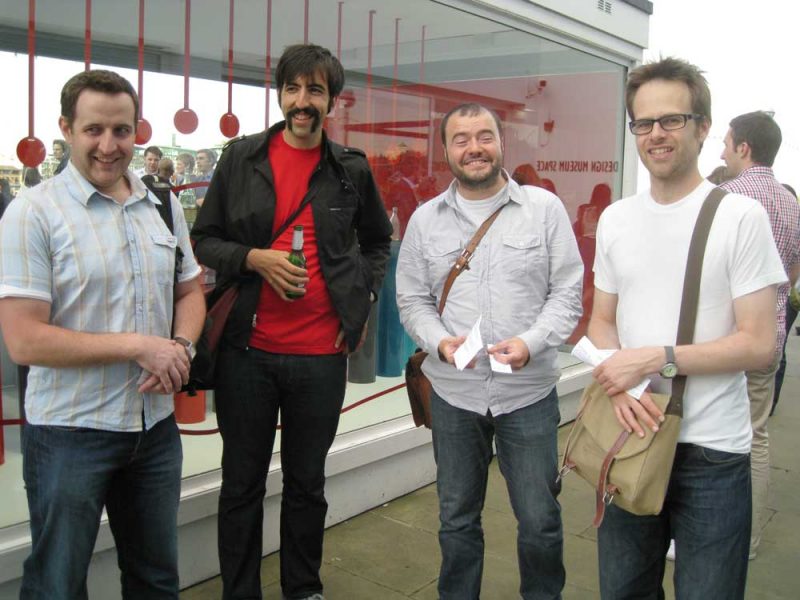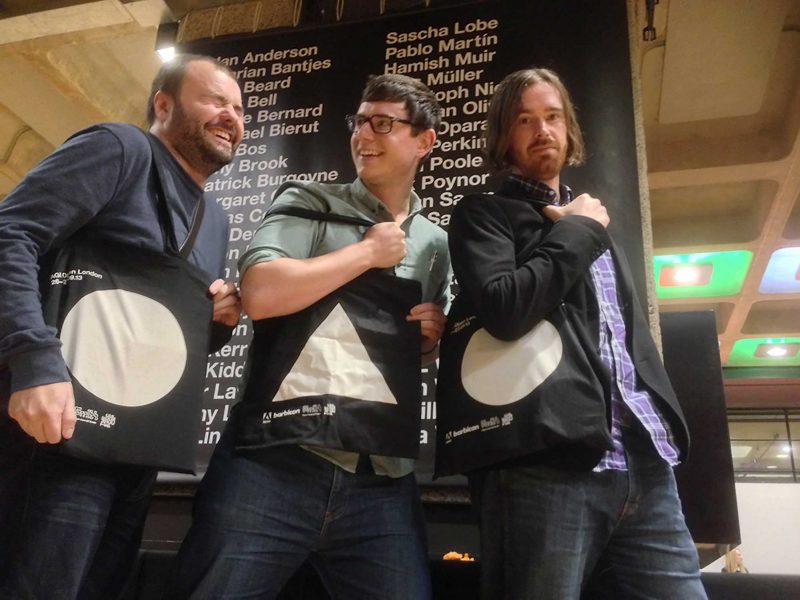In the second of their Take 5 series, Design Council invited Andy Altmann, one of the three founding partners at Why Not Associates. Five topics, five minutes each, followed by five questions; at least I think that was supposed to be the format.
Andy Altmann at Design Council

When I was at college, a couple of generations ago, the Design Council seemed like a big deal. It was an exciting time, celebrity designers like Neville Brody, Seymour & Powell, and Katharine Hamnett were on the telly, and the Design Museum opened to great fanfare. It felt like the Design Council were at the centre of it all.
It was no exaggeration when he explained that the book had revolutionised design book publishing. But, as he explained, they had no idea about that at the time, they just wanted to design the best book they could.
Part of that wave of enthusiasm for design was a new fashion outlet that reinvented the mail order business. Next sold clothes that we wanted to wear (not the action slacks and coral cardigans of the Freemans catalogues). And the Next catalogues were amazing objects, beautifully designed with incredibly high production values, including tipped-in fabric samples, hard-back cover, and divider pages of incredible typography.
I don’t think I ever ordered any clothes from Next but I always ordered their catalogues and I still have the first two editions, hoarded away somewhere in my loft. I don’t know how I knew at the time, perhaps I read it in The Face, but I did know that those stunning objects were designed by a young studio collective, not long out of the Royal College, by the name of Why Not Associates. I was in awe of Why Not Associates and have been so ever since.
As a grown up designer, I’ve never felt a particular affinity with the Design Council. In my head, they’ve always been about invention, manufacture and export of products (I may well be wrong but that’s been my impression). More recently however, they’ve drifted back onto my radar. When they announced a series of talks, under the title Take 5, I thought it was about time I took note. And when the second of those speakers was announced as Andy Altmann, from Why Not Associates, I booked up straight away.
In the very swanky Angel building, in Islington, I arrived a little early and negotiated the oddity of the building’s security: my name was checked on an iPad as I queued to get in, my ‘security’ pass was a hand-written sticker, and I was ‘buzzed’ through the entrance by an officious man with a remote control.
On the third floor, in the Design Council suite, I stood and watched the room fill with people who’d not been born when those Next catalogues were in use.
Andy Altmann approached his talk with good humour. He’d been told he had to talk about five subjects so that’s what he did. He crowbarred his talk into the theme by using five Erics as his headings.
Eric Gill was his first hero, a chance to talk about typography as a whole, about early experimentation, about being introduced to Gill’s work by Phil Baines, a fellow student at RCA. Altmann later reminded us of the book ‘Typography Now’ which Why Not had produced with Rick Poyner . It was no exaggeration when he explained that the book had revolutionised design book publishing. But, as he explained, they had no idea about that at the time, they just wanted to design the best book they could.
Eric Cantona took us through Altmann’s love of Man United and Reckless Eric jumped us through more of Why Not’s history and how the post-punk aesthetic has influenced so much of their work.
Eric Morcambe was the Eric the audience had been waiting for. The Comedy Carpet project, in Blackpool, was such an incredible undertaking that I’m sure Altmann could have talked about it all day. The research, the happenstance of knowing the right people at the right time, the history of experiments with granite and concrete that placed them perfectly for the work, the refusal of the client to pay the full fee that led to artist Gordon Young starting his own factory for the project (which afforded them a lot more opportunity for experiment), the five-year time frame; we soaked it all up.
The last Eric, Morley, seemed incongruous (especially as surely hardly anyone knew that Morley was the uncomfortable character who had founded the Miss World ‘competition’). But Altmann used him as a pivot to talk about some of Why Not’s most hard-hitting and political work, campaigns to raise awareness about sex-trafficking, and the stunning title sequences for C4’s Unseen Gaza.
The Take 5 theme was pushed again as the audience were invited to ask five questions. The inevitable ‘where are the off-cuts of granite?’ and ‘what’re your favourite typefaces?’ followed; Altmann answered with good cheer.
Then the lights went on and we were invited to grab a free beer and mingle. I slunk off, negotiated my way through the security borders, handed back my hand-written sticker and headed off, still unsure how the Design Council is relevant to my world but grateful of the opportunity to hear that one of my student heroes was so normal and grounded. I’m now even more in awe of Why Not Associates.

















